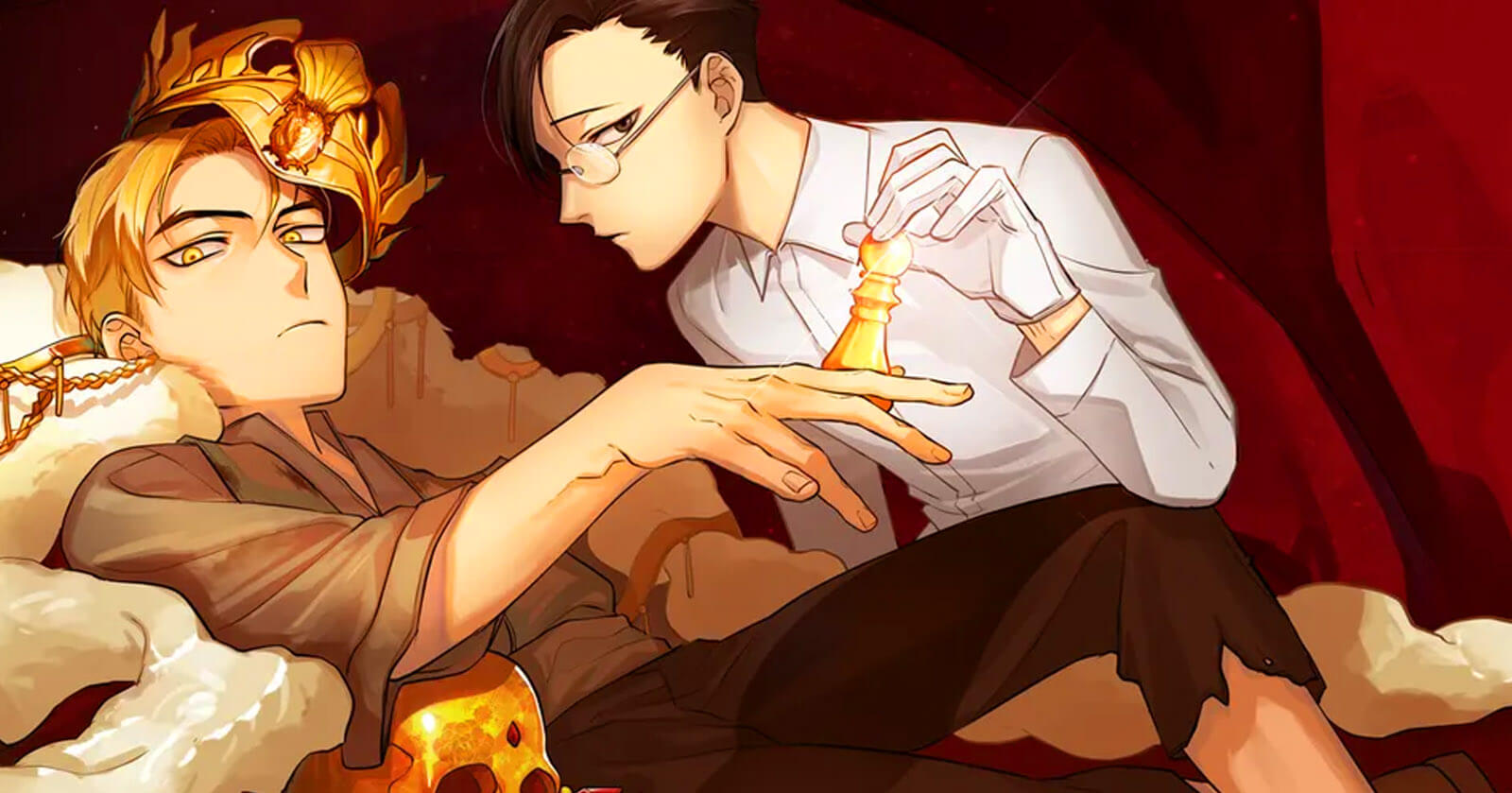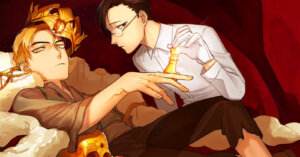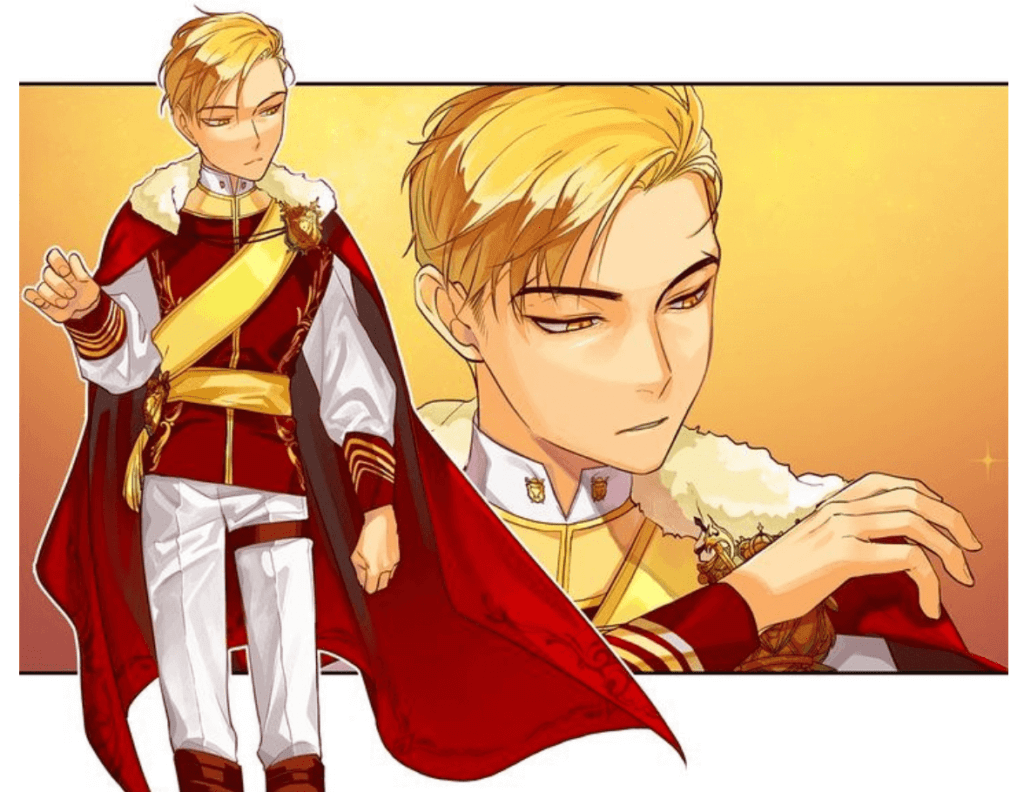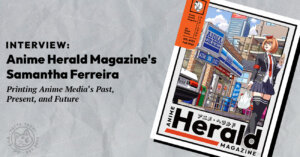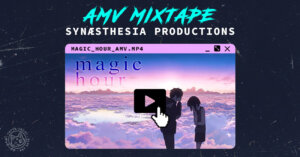At the AnimeNYC 2025 panel “SPOTLIGHT: KING’S MAKER CREATORS,” webtoon artist Kang Jiyoung recounted receiving a call from her peer Haga the day she arrived back in South Korea from a trip to Japan. “Where are you?” Haga asked. “Come to this cafe in one hour.” Kang briefly wondered if her artist peer was “an organ trafficker.” Instead, when she arrived at the cafe, Haga proposed to her that they team up for a new project.
The result of that conversation was King’s Maker, a boys’ love fantasy epic. It tells the tale of Wolfgang Goldenleonard, the king’s hidden fourth son. After rejoining royal society to save his friends, he meets Shin Soohyuk, a favorite of the abusive king. Soohyuk offers to teach Wolfgang the ways of nobility. His real goal, though, is to destroy Wolfgang’s monstrous father.
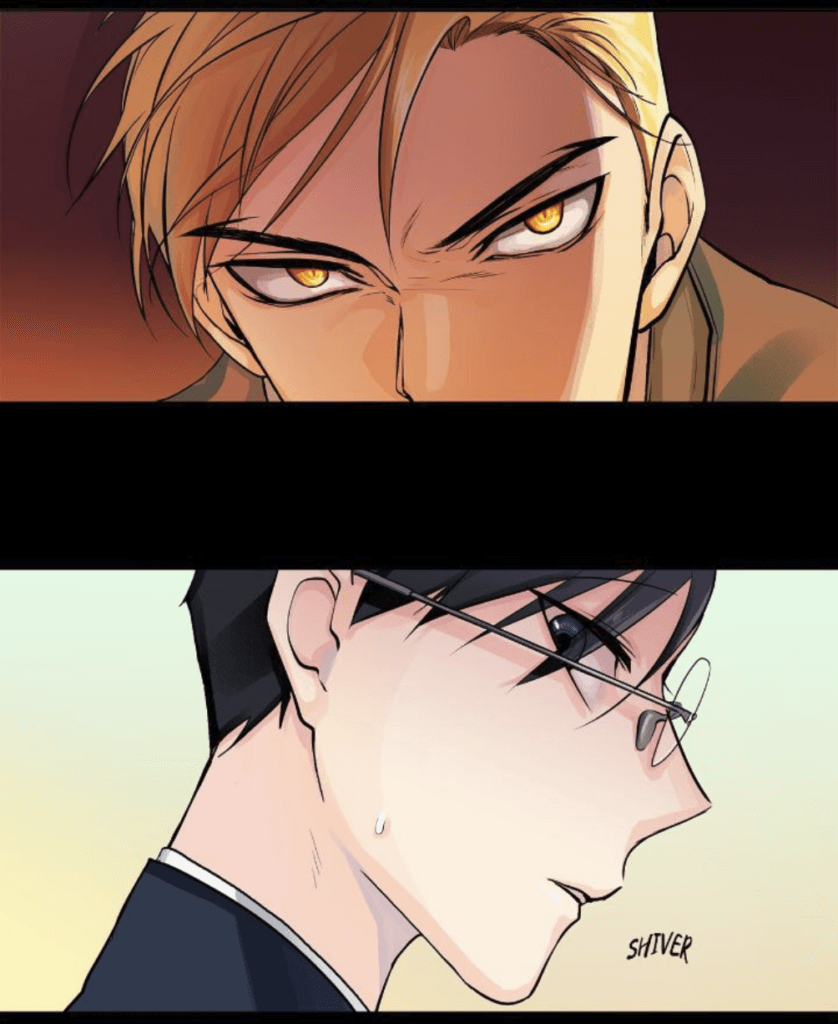
We discovered each other’s strong points
While the Penguin Random House website lists Haga as “writer” and Kang as “artist,” the two were equal collaborators. Haga studded the script with references to the Bible; she was also particularly good at depicting sensitive facial expressions. Kang burnished the series with gold and indigo, the vivid colors of royalty. She was also the best at depicting action scenes. “As time went by,” Haga said, “we discovered each other’s strong points.”
Even with a colleague, creating manhwa can be a lonely pursuit. “If you aren’t careful,” Kang said, “you will forget why you like to draw in the first place. Don’t forget your motivation to become a cartoonist!” Haga, on the other hand, stressed the importance of making art, whether or not you feel adequate. “Any time you have a chance,” she said, “make something! If you make mistakes, correct them.”
After the panel, Haga and Kang Jiyoung attended a press conference with Yunhwa Kim of Jaedam Media. They were questioned by representatives from GEEKS Out and Publisher’s Weekly, as well as myself. Their answers include King’s Maker’s influences, the process by which they write characters, and how the webtoon industry has changed since their respective debuts.
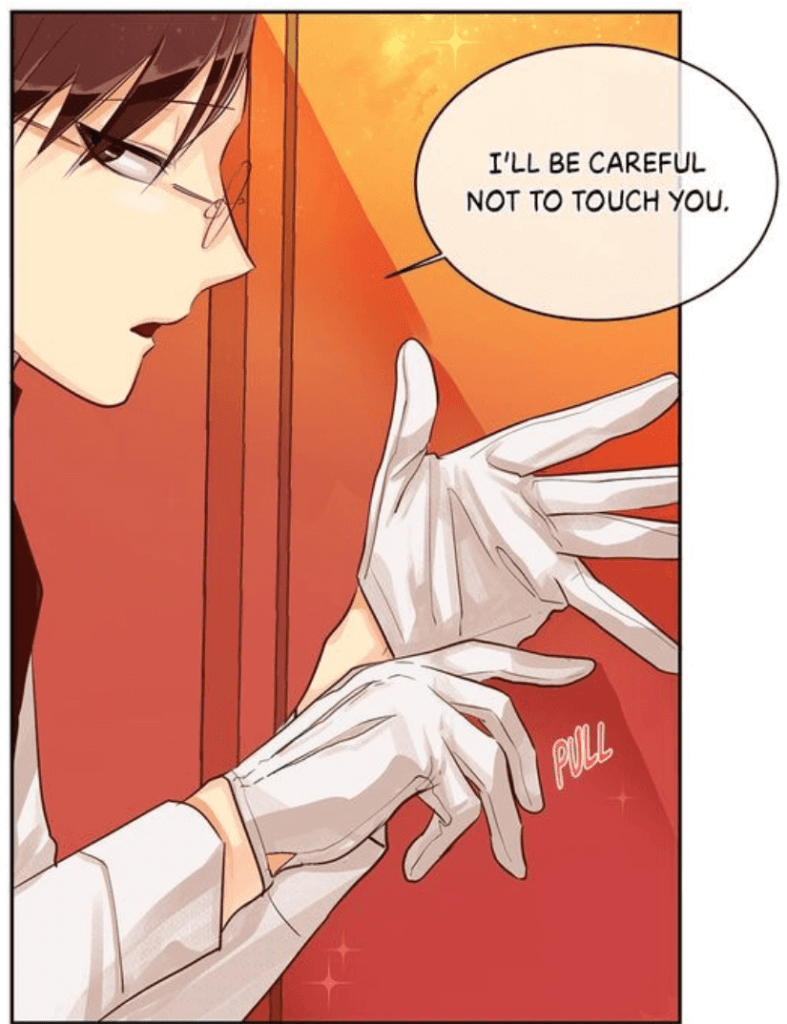
The theme of my works is love
GEEKS OUT: As artists and writers, what got you into storytelling, especially exploring LGBTQ+ stories?
HAGA: The theme of my works is love. I want to express many different shapes of love, not just romantic relationships. But I would not avoid romance, either.
KANG JIYOUNG: We want to tell stories about all kinds of love, and LGBTQ+ love is one of them.
YATTA-TACHI: Haga’s two previous works, For the Sake of Sita and Nessun Dorma: None Shall Sleep, were inspired by myth (the Kumari Devi tradition in Nepal) and opera (Turandot). What led you to these sources?
HAGA: My debut, For the Sake of Sita, was inspired by my personal experience when I did volunteer service work in Nepal. I saw the Kumari with my own eyes. For Turandot, I had known that opera ever since I was very young. I felt sorry for the character Liu, who made such a great sacrifice but never won the spotlight. My intention was to make everybody else care for her, rather than just myself.
PUBLISHER’S WEEKLY: I’d be very interested in what manhwa, manga, or comics you enjoy, even if it wasn’t an influence on King’s Maker directly.
HAGA: There are two big influences on King’s Maker, Calbania Story and Fullmetal Alchemist: Brotherhood. Otherwise, I like Medalist so much that I’ve started figure skating like the characters. It’s been two months since then.
KANG: I love Arcane! I’ve watched it 20 times.
The more webtoons, the higher the standards
GEEKS OUT: How would you describe your approach to worldbuilding and characters?
HAGA: First, we choose two contrasting characters for synergy. Then, we develop assisting characters to fill in the gaps. After we create the cast, we throw them into the story, which develops on its own. We name them at the very end.
YATTA-TACHI: Both of you are now teaching and mentoring young artists. How is the industry that these artists are now entering different from the one that you experienced at the start of your careers?
KANG: Circumstances have dramatically changed since I debuted in 2012. At that time, comics were drawn by one author who did writing, illustrations, and everything else. These days, we have many artists working together on one big project. You can be a professional webtoon artist without having all the skills you need to make a comic on your own.
GEEKS OUT: If I may comment, I feel like there is a bias in western publishing towards those who can write as well as draw. Somebody who can write but not draw has a harder time breaking into the system.
PUBLISHER’S WEEKLY: I would say that is more true in indie comics. For publishers like Marvel and DC, usually there is division of labor.
HAGA: If you want to become a webtoon artist, you should find out what you like to do most, whether that’s the art or writing the story. After that, you need communication skills so that you can effectively work together with your peers.
YUNHWA KIM (JAEDAM MEDIA): Ten years ago, the market for webtoons was 10 billion won in Korea. Now, it’s 1.5 trillion won.
HAGA: The more webtoons are drawn, the higher the standards. That’s why we collaborate.
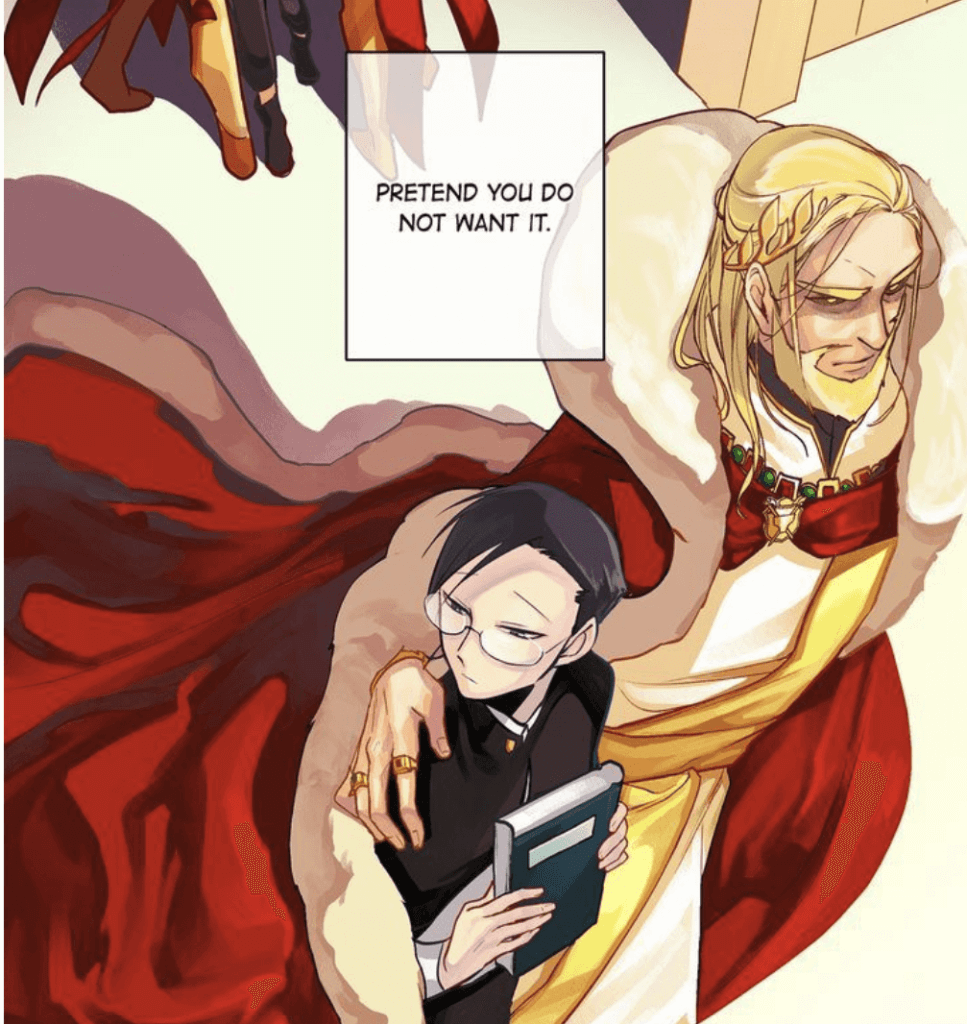
My first reader is you
PUBLISHER’S WEEKLY: When and how did you notice that you had an audience in the United States? What was that like?
KANG: We learned through SNS. I stated earlier that we created languages for the series. But that language was based on Korean characters. To my amazement, when the series was translated into English, they translated that new created language into English, as well. That was when we realized there were a lot of international fans for this series.
HAGA: There’s one character in the series named Ulysses, who is always changing his outfit. A fan outside South Korea made a “lookbook” of all his outfits. We were impressed by their energy and passion.
GEEKS OUT: You mentioned in the panel earlier how lonely and exhausting creating comics can be. What keeps you going in your work?
KANG: We always think that, “My first reader is you.” My first goal is to make sure Haga is satisfied with my work. If she likes it, and finds it interesting, that’s enough. That was my secret to overcoming loneliness.
HAGA: We can’t satisfy everybody. They say that there are anti-fans in Korea even for Jesus. So I put a lot of effort into fortifying my strengths instead of overcoming my weaknesses.
YATTA-TACHI: In an interview with KComicsBeat, Jayden Kang of Kakao Entertainment said that, “In novels, characters can sometimes shift from ‘good’ to ‘evil’ as the story progresses. In webtoons, though, that doesn’t work…readers might not remember what happened last week.” Do you agree? If so, why? If not, why not?
HAGA: I agree with half of that. People use devices with a small screen to read our comics before bed. We make sure to differentiate the hair colors of the characters so you know who is who, and write shorter, simpler sentences so that they are easier to read. But for the characters, it’s a case by case basis.
KANG: I hardly agree with that opinion. Regardless of whether the story is easy or hard to read, readers will follow so long as we can put some joy and fun out into the world. That’s what matters.
Article edited by: Anne Lee
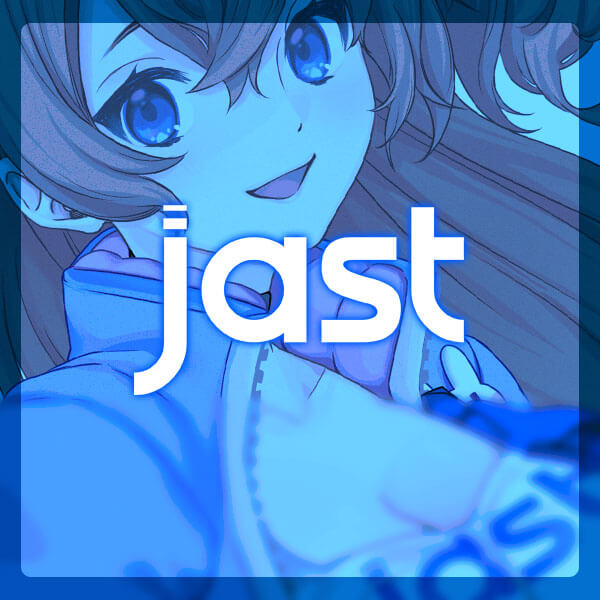
Featured Sponsor - JAST
The sweetest romance and the darkest corruption, the biggest titles and the indie darlings; for visual novels and eroge, there's nowhere better.
Big thank you to our supporters
From their continous support, we are able to pay our team for their time and hard work on the site.
We have a Thank-You page dedicated to those who help us continue the work that we’ve been doing.
See our thank you page